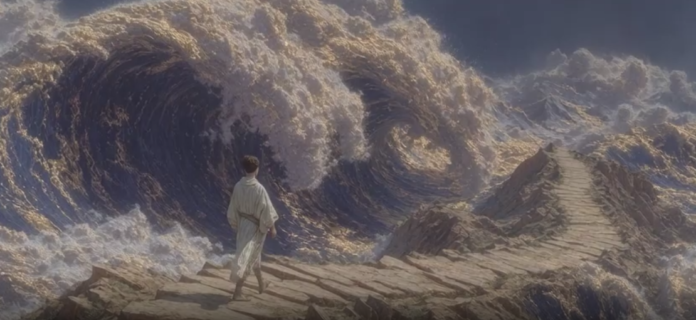Midjourney, the AI platform best known for its striking image generations, has expanded into the video space. On Wednesday, the company unveiled its first-ever video generation model, dubbed V1. This image-to-video tool transforms still images into short animated clips.
The V1 launch signals a pivotal moment for Midjourney, which has primarily focused on still imagery since its inception. In the company’s post about the release of V1, Midjourney founder David Holz stated, “As you know, our focus for the past few years has been images. What you might not know, is that we believe the inevitable destination of this technology are models capable of real-time open-world simulations. In order to do this, we need building blocks. We need visuals (our first image models). We need to make those images move (video models). We need to be able to move ourselves through space (3D models) and we need to be able to do this all fast (real-time models).”
How Midjourney’s V1 works
V1 uses a straightforward “Image-to-Video” process. A user can either create an image within Midjourney or upload one from an outside source. Next, the user clicks Animate to convert it into a video. Then, the user can assign a “start frame” and provide a “motion prompt” to guide how the scene plays out.
Two animation modes are available: An “automatic” setting provides a default “motion prompt” to make things move. For more control, a “manual” animation button allows users to describe precisely how they want the scene and objects to move.
The model also includes “high motion” and “low motion” modes. Low motion is recommended for subtle movements and ambient scenes, where the camera largely remains static. High motion is ideal for dynamic scenes with significant subject and camera movement. While high motion can be exciting, Midjourney advises that “all this motion can sometimes lead to wonky mistakes.”
Each video begins as a five-second clip. Users can extend clips by roughly four seconds per segment, up to four times.
How to access Midjourney’s V1
Midjourney says each video generation job requires 8x more computing power than a standard image, which translates to a cost of roughly one image per second of video.
Access is currently limited to web users with an active Midjourney subscription, which starts at $10 per month. Midjourney claims its tool is up to 25 times more affordable than other AI video tools.
How Midjourney’s V1 stands out among competitors
The market for generative AI video tools is rapidly becoming more competitive. Competitors include OpenAI’s Sora, Google’s Veo 3, Adobe’s Firefly, and Runway’s Gen-4, all pushing the limits of text or images into video.
Compared with more cinematic or photorealistic models, Midjourney’s tool is more casual and user-friendly. V1 may not yet rival the polish of competitors, but its ease of use and relatively low cost could make it attractive to artists, designers, and curious hobbyists.
How Midjourney has responded to the Disney/Universal lawsuit
Last week, Disney and NBCUniversal filed a copyright infringement lawsuit against Midjourney. The complaint alleges that Midjourney’s AI models were trained on protected content, creating unauthorized digital versions of iconic characters including Darth Vader and Homer Simpson.
Midjourney has not issued a direct response to the lawsuit, but continues to urge users to “please use these technologies responsibly,” echoing its longstanding stance on ethical AI use.
Read eWeek’s in-depth comparison of Midjourney vs. DALL-E.
